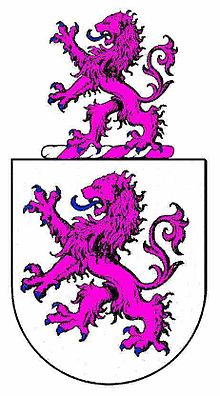House of Silva
| Silva | |
|---|---|
| Family name | |
 |
|
| Region of origin | Portugal , Spain |
| Related names | House of Alba , House of Savoy |
The House of Silva [English pron.: /ˈSill-vah'/] is an aristocratic family of Spanish and Portuguese origin.
Juan de Mena's work of the first half of the 15th century was giving families their ancestral monarchy and royal power to link them to the glorious past. Juan de Mena indicated that the Silva were "very noble Royals and noblemen of high rank" with some writings claiming for them descent from the mythical Latin kings of Alba Longa (and hence from Aeneas of Troy). He adds the claim that a member of the family fought with Pelagius of Asturias.Luis de Salazar y Castro repeated these and other similar traditions of ancient Italian origin in his Historia genealógica de la Casa de Silva, published in 1685, as well as other equally unfounded derivation from the royal house of Silva and Asturias.
In Portugal, one branch of the family came to hold Vagos, Tentugal and Boarceos. One of this line, Diego Gomes de Silva, was appointed alfarez mayor in 1416. Of his line came Ruy Gómez de Silva, one of the nobles of the court of Philip II of Spain, making Ruy Silva the Prince of Éboli, Duke of Pastrana, Duke of Estremera, and Count of Melito.
A branch of the family became established in the Castile after Arias Gomes de Silva, was named Prince of Córdoba. His son Alfonso Tenorio Silva intermarried with the city gentry to establish his family as one of the most powerful in the city as well as serving in the courts of successive Trastámara monarchs. His son Juan Silva was made count of Cifuentes, while younger branches of the Silva family were lords of Montemayor and Corral.
Ruy Gómez de Silva was the son of Francisco de Silva, 10th Duke of Huéscar and María de Noronha, lords of Ulme y de Chamusca, where Ruy was born in 1516. In 1526, Ruy moved with his grandfather to Castilla due to Isabella of Portugal. In 1552, Ruy became engaged to 12-year-old Ana de Mendoza de la Cerda, daughter of Diego Hurtado de Mendoza, 1st Duke of Francavilla, as per suggestion and request by Gomes II. The formal wedding promise took place on 18 April 1553.
_________________________________________________________________________________________
...
Wikipedia
